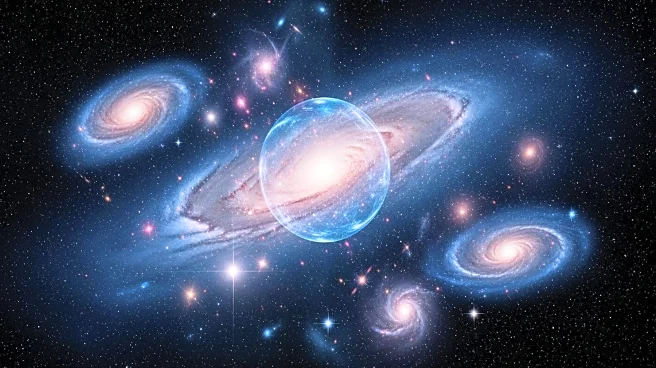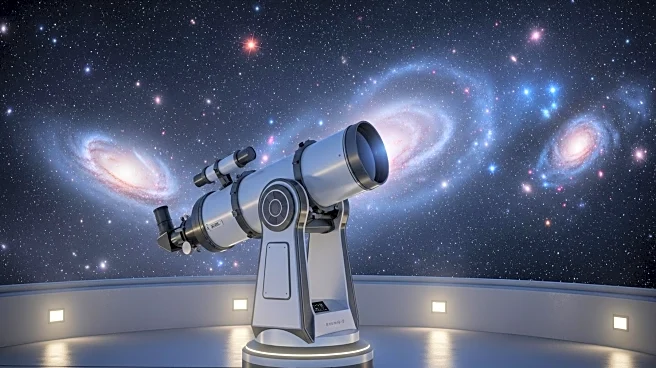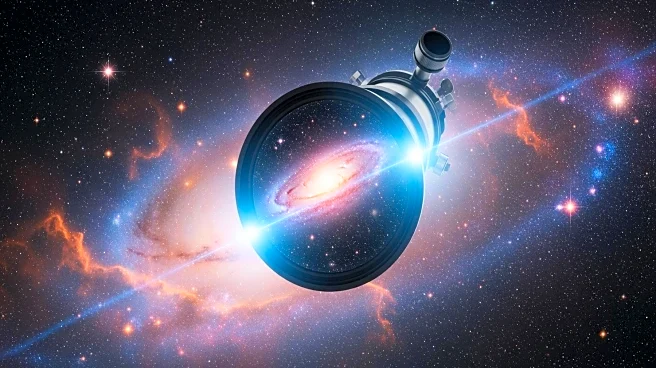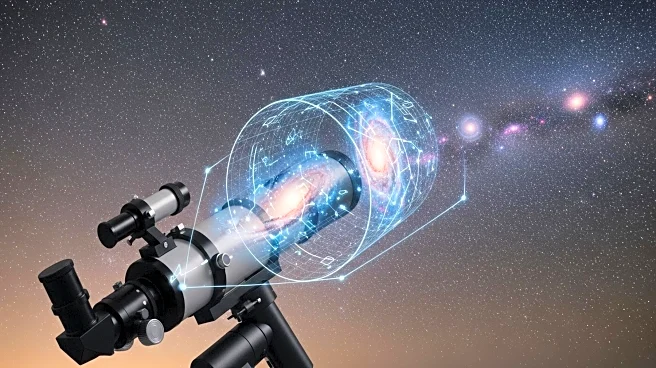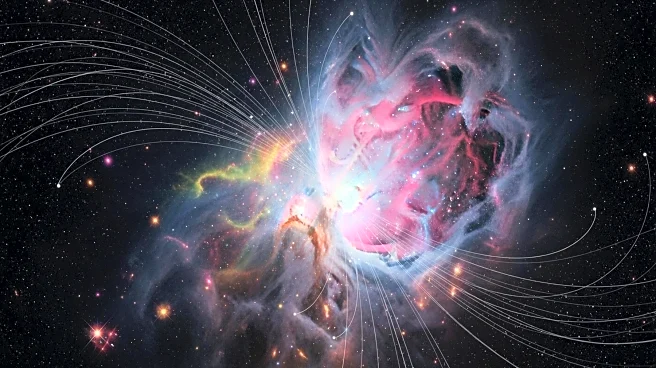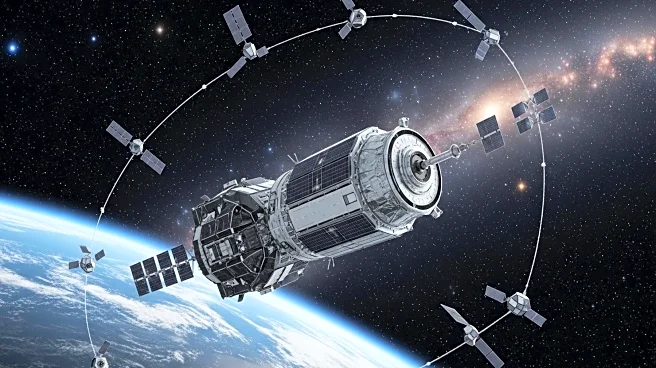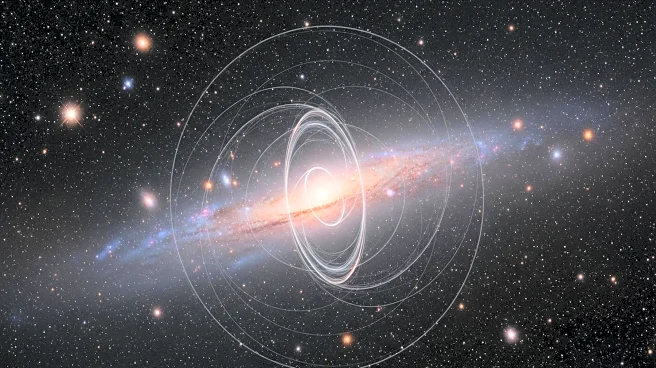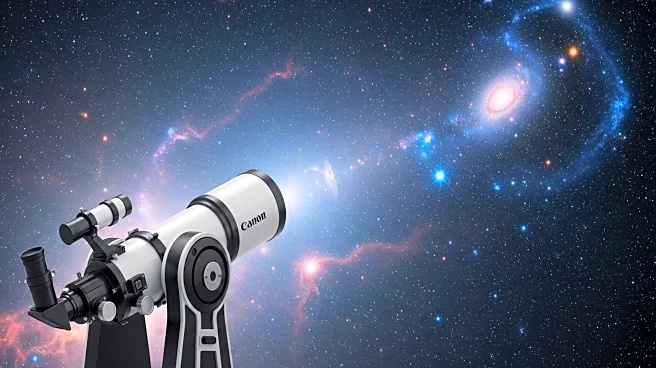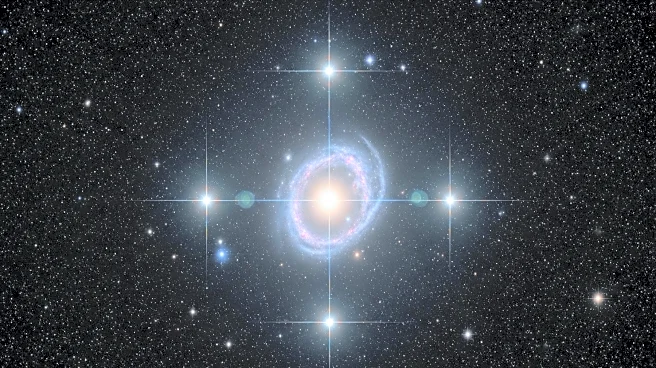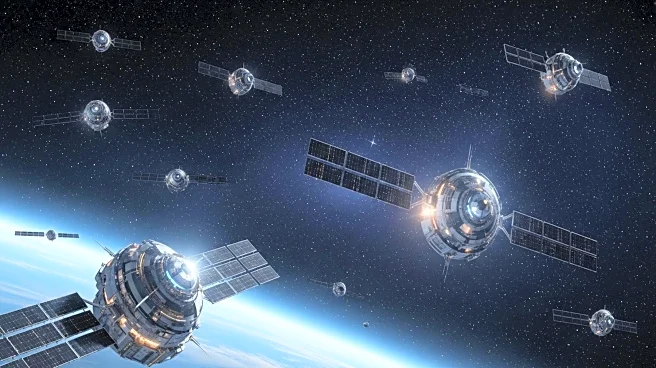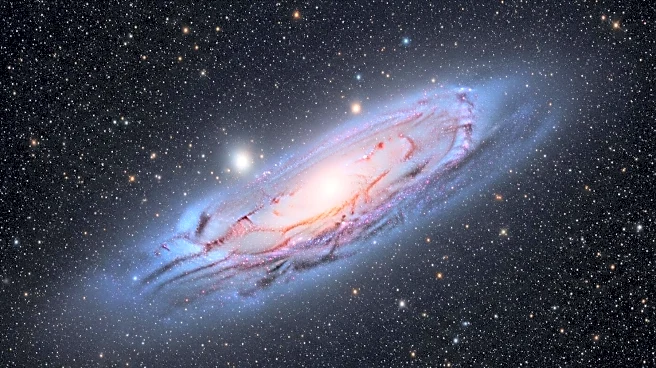What is the story about?
What's Happening?
The European Space Agency's Euclid mission has released the most extensive cosmological simulation ever created, known as the Flagship 2 galaxy mock. This simulation includes 3.4 billion galaxies, each modeled with 400 properties such as brightness, position, velocity, and shape. Developed using algorithms by UZH professor Joachim Stadel, the simulation aims to assist scientists in interpreting the vast datasets generated by Euclid, a space telescope that has been surveying the cosmos since June 2023. The simulation was computed on the Piz Daint supercomputer, one of the most powerful in the world, utilizing over 80% of its capacity. The simulation tracks gravitational interactions of four trillion particles and populates these structures with galaxies within Euclid's field of view, providing a realistic blueprint of what Euclid will observe.
Why It's Important?
This simulation is crucial for preparing the analysis of Euclid's data, which is produced in large volumes and at high speeds. The methodology for interpreting these data had to be developed in advance using simulations. The Flagship 2 galaxy mock is based on the standard cosmological model and incorporates current knowledge about the universe's composition and evolution. Euclid's observations are expected to confirm the matter distribution predicted in the simulation, but researchers anticipate potential surprises and discoveries that could challenge the standard model. The mission also aims to shed light on dark energy, the mysterious force driving cosmic expansion, by enabling astronomers to look back up to 10 billion years in cosmic history.
What's Next?
Euclid's high-resolution data will allow researchers to detect minute distortions in galaxy images caused by gravitational lensing, revealing the distribution of dark matter across the universe. Spectroscopic measurements will enable scientists to determine galaxy distances accurately, creating a three-dimensional map of galaxies spanning a cosmic sphere with a radius of 10 billion light-years. Euclid is expected to uncover rare cosmic phenomena due to its vast coverage area. The mission's first observational data was released in March 2025, offering new insights into the cosmic web and galaxy clusters. Further datasets are planned for release in spring 2026.
Beyond the Headlines
The Euclid mission represents a significant advancement in cosmological research, providing unprecedented resolution and precision in space observations. By challenging the standard cosmological model and exploring the nature of dark energy, Euclid could lead to a deeper understanding of the universe's fundamental forces and structures. The mission's findings may prompt revisions in theoretical frameworks and inspire new lines of inquiry in astrophysics.
AI Generated Content
Do you find this article useful?


